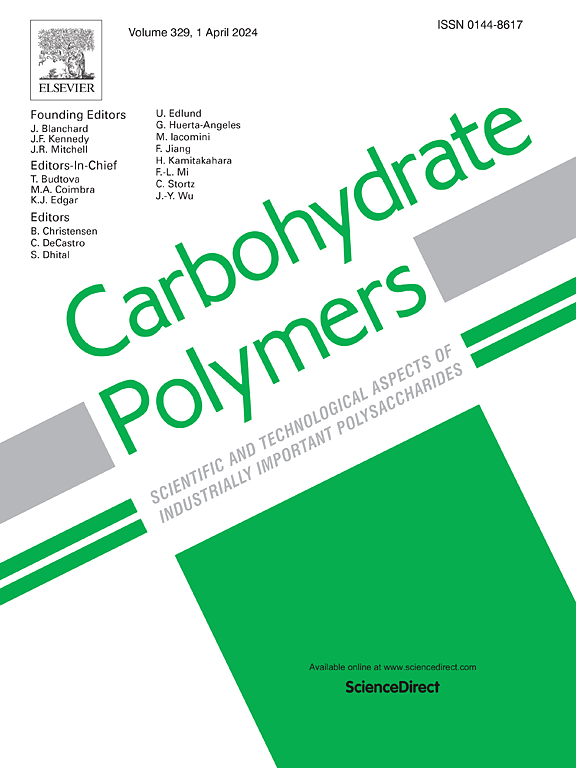Cellulose self-erasing material with dual functions in information encryption
IF 10.7
1区 化学
Q1 CHEMISTRY, APPLIED
引用次数: 0
Abstract
Materials capable of multiple encryption, color-changing visualizations, and time-dependent functionalities are ideal for efficient and secure information storage and transmission. In this study, a time-dependent self-erasing material (TDSEM) containing urease developed through the in-situ synthesis of gold nanoclusters on the surface of cellulose nanocrystal (CNC) chemically bonding fluorescein isothiocyanate. CNC not only played an important role as a long-term stabilizer for the material, but also acted as a bridge facilitating the assembly of organic and inorganic interfaces, enabling the integrated system to achieve multi-color regulation and fluorescence resonance energy transfer. The TDSEM demonstrated excellent pH responsiveness, cyclic stability, and durability. The information was encoded by directly introducing HCl/urea into the TDSEM, and automatically erased over time. Additionally, the fluorescence intensity and color (transitioning from red to orange to green) were modulated over a time scale by adjusting the urea concentration, thus precisely controlling the time to retrieve the correct information (22 min). The confidentiality of the encoded information was enhanced by dual “locking” of time and color, ensuring that decryption only occurred “time color key”. This time-dependent and color-varying dual functions provide valuable insights for the development of advanced information encryption and anti-counterfeiting technologies.

具有信息加密双重功能的纤维素自硬化材料
能够进行多重加密、变色可视化以及具有时间依赖性功能的材料是高效、安全地存储和传输信息的理想选择。在这项研究中,通过化学键合异硫氰酸荧光素,在纤维素纳米晶(CNC)表面原位合成金纳米团簇,开发出一种含有脲酶的时间依赖性自褪色材料(TDSEM)。CNC 不仅作为材料的长期稳定剂发挥了重要作用,还充当了促进有机和无机界面组装的桥梁,使集成系统实现了多色调节和荧光共振能量转移。TDSEM 具有出色的 pH 值响应性、循环稳定性和耐久性。通过将盐酸/尿素直接导入 TDSEM,可对信息进行编码,并随着时间的推移自动清除。此外,荧光强度和颜色(从红色过渡到橙色再到绿色)可通过调节尿素浓度在一定时间范围内调节,从而精确控制检索正确信息的时间(22 分钟)。时间和颜色的双重 "锁定 "提高了编码信息的保密性,确保只有 "时间颜色密钥 "才能解密。这种随时间和颜色变化的双重功能为开发先进的信息加密和防伪技术提供了宝贵的启示。
本文章由计算机程序翻译,如有差异,请以英文原文为准。
求助全文
约1分钟内获得全文
求助全文
来源期刊

Carbohydrate Polymers
化学-高分子科学
CiteScore
22.40
自引率
8.00%
发文量
1286
审稿时长
47 days
期刊介绍:
Carbohydrate Polymers stands as a prominent journal in the glycoscience field, dedicated to exploring and harnessing the potential of polysaccharides with applications spanning bioenergy, bioplastics, biomaterials, biorefining, chemistry, drug delivery, food, health, nanotechnology, packaging, paper, pharmaceuticals, medicine, oil recovery, textiles, tissue engineering, wood, and various aspects of glycoscience.
The journal emphasizes the central role of well-characterized carbohydrate polymers, highlighting their significance as the primary focus rather than a peripheral topic. Each paper must prominently feature at least one named carbohydrate polymer, evident in both citation and title, with a commitment to innovative research that advances scientific knowledge.
 求助内容:
求助内容: 应助结果提醒方式:
应助结果提醒方式:


